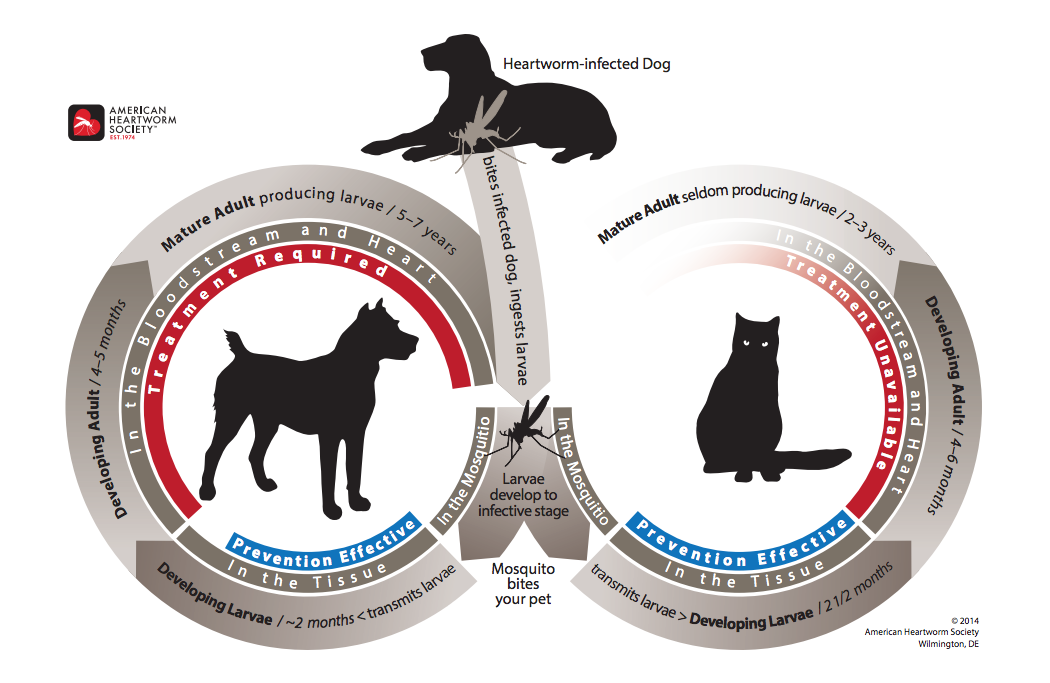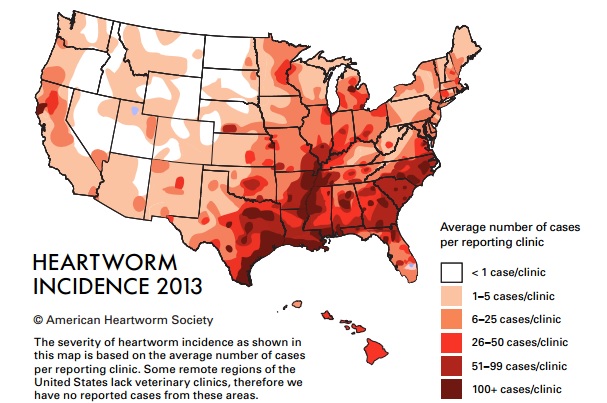Heartworm is a scary diagnosis for any pet, yet there are still pet parents who decline heartworm prevention and are not concerned with the disease. These pet parents are typically unaware of how heartworm affects the Cleveland area and we would like to take the time to address the geographical range as well as the life cycle of the potentially fatal disease.
Life Cycle:

Dogs are prime host for the heartworm parasite. Heartworms are able to reproduce easily in your dog’s heart and bloodstream and the number of them will only increase without treatment. Cats, on the other hand, are not the best hosts for these parasites. That being said, just one or two heartworms in your feline friend can be detrimental to their health, causing significant, irreversible respiratory problems, if not death. There is also no guaranteed test or treatment available for cats with heartworm disease.
Geography:

This map provides the most comprehensive data available from the American Heartworm Society. We hope that it puts into perspective how the vast majority of the United States has pets that are affected by heartworm disease. Note that most of Ohio had 6-25 pets who had tested positive for heartworm disease, while northeast Ohio averaged 26-50 positive heartworm tests per year. The average number may be even higher since not all animal clinics reported into the study and not all cats with heartworm test positive for the disease.
And remember, even if only the whole clinic only has one positive heartworm test that year, it could be your pet.
Clearly, the key is heartworm prevention, which is much less expensive and more effective than available [or lack of available] treatments.
Have you known a pet with heartworm disease? Let us know in the comments below!

